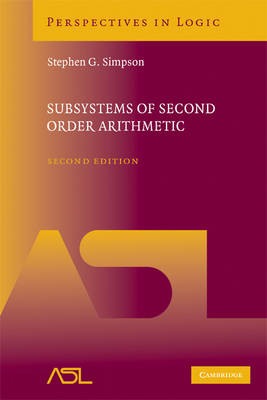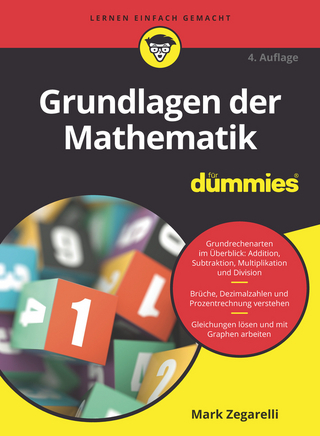
Subsystems of Second Order Arithmetic
Seiten
2009
|
2nd Revised edition
Cambridge University Press (Verlag)
978-0-521-88439-6 (ISBN)
Cambridge University Press (Verlag)
978-0-521-88439-6 (ISBN)
What are the appropriate axioms for mathematics? Through a series of case studies, this volume examines these axioms to prove particular theorems in core areas including algebra, analysis, and topology, focusing on the language of second-order arithmetic, the weakest language rich enough to express and develop the bulk of mathematics.
Almost all of the problems studied in this book are motivated by an overriding foundational question: What are the appropriate axioms for mathematics? Through a series of case studies, these axioms are examined to prove particular theorems in core mathematical areas such as algebra, analysis, and topology, focusing on the language of second-order arithmetic, the weakest language rich enough to express and develop the bulk of mathematics. In many cases, if a mathematical theorem is proved from appropriately weak set existence axioms, then the axioms will be logically equivalent to the theorem. Furthermore, only a few specific set existence axioms arise repeatedly in this context, which in turn correspond to classical foundational programs. This is the theme of reverse mathematics, which dominates the first half of the book. The second part focuses on models of these and other subsystems of second-order arithmetic.
Almost all of the problems studied in this book are motivated by an overriding foundational question: What are the appropriate axioms for mathematics? Through a series of case studies, these axioms are examined to prove particular theorems in core mathematical areas such as algebra, analysis, and topology, focusing on the language of second-order arithmetic, the weakest language rich enough to express and develop the bulk of mathematics. In many cases, if a mathematical theorem is proved from appropriately weak set existence axioms, then the axioms will be logically equivalent to the theorem. Furthermore, only a few specific set existence axioms arise repeatedly in this context, which in turn correspond to classical foundational programs. This is the theme of reverse mathematics, which dominates the first half of the book. The second part focuses on models of these and other subsystems of second-order arithmetic.
Stephen G. Simpson is a mathematician and professor at Pennsylvania State University. The winner of the Grove Award for Interdisciplinary Research Initiation, Simpson specializes in research involving mathematical logic, foundations of mathematics, and combinatorics.
List of tables; Preface; Acknowledgements; 1. Introduction; Part I. Development of Mathematics within Subsystems of Z2: 2. Recursive comprehension; 3. Arithmetical comprehension; 4. Weak König's lemma; 5. Arithmetical transfinite recursion; 6. π11 comprehension; Part II. Models of Subsystems of Z2: 7. β-models; 8. ω-models; 9. Non-ω-models; Part III. Appendix: 10. Additional results; Bibliography; Index.
| Reihe/Serie | Perspectives in Logic |
|---|---|
| Verlagsort | Cambridge |
| Sprache | englisch |
| Maße | 160 x 240 mm |
| Gewicht | 800 g |
| Themenwelt | Mathematik / Informatik ► Mathematik ► Allgemeines / Lexika |
| Mathematik / Informatik ► Mathematik ► Logik / Mengenlehre | |
| ISBN-10 | 0-521-88439-X / 052188439X |
| ISBN-13 | 978-0-521-88439-6 / 9780521884396 |
| Zustand | Neuware |
| Haben Sie eine Frage zum Produkt? |
Mehr entdecken
aus dem Bereich
aus dem Bereich
Buch | Hardcover (2023)
Hanser, Carl (Verlag)
29,99 €


